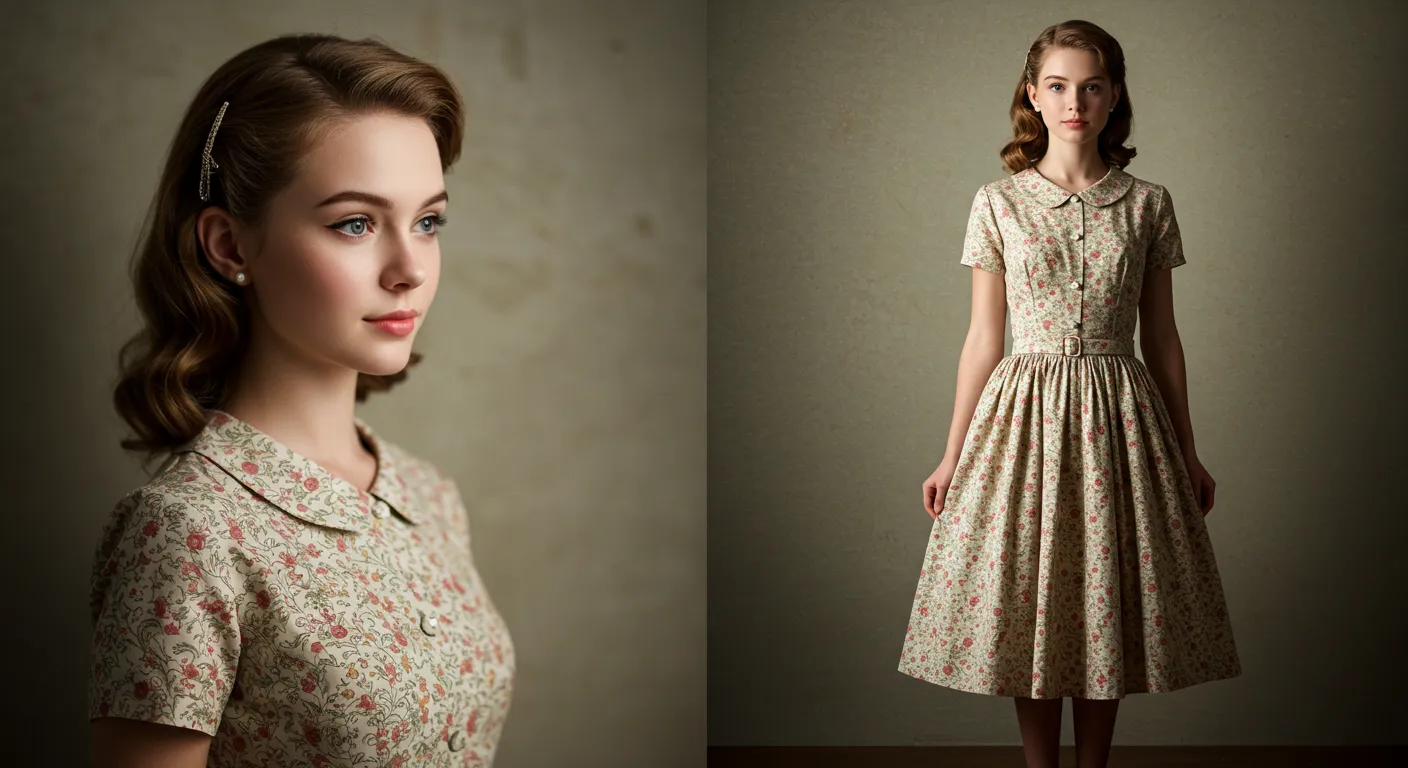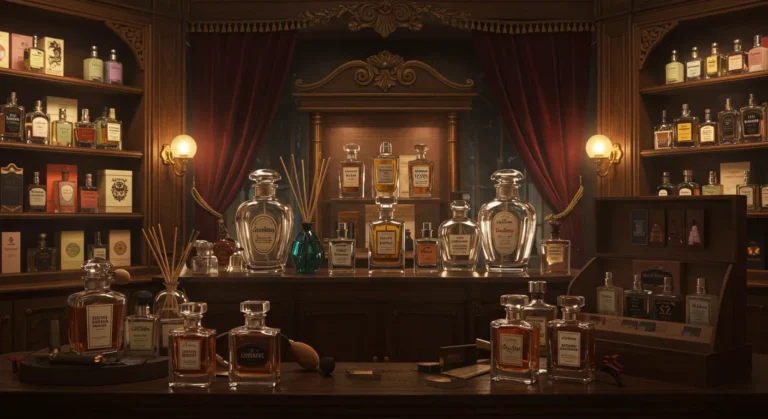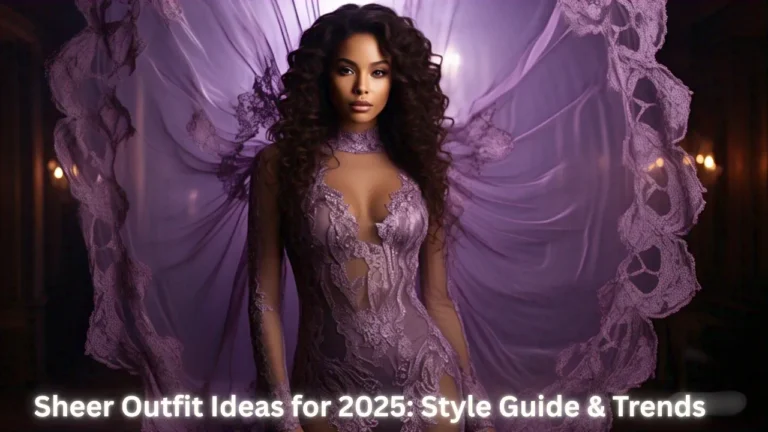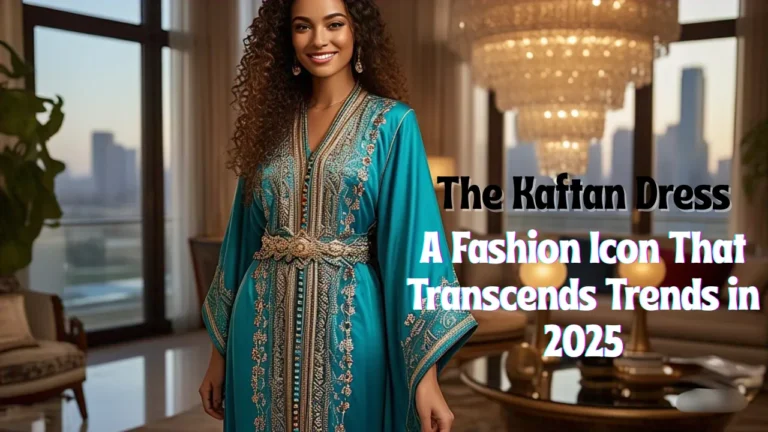Dior 1950 The best Era That Redefined Fashion trends
introduction
The Dior 1950 marked a transformative decade in the world of fashion, and at the heart of this revolution was Christian Dior’s groundbreaking designs. The term “Dior 1950” is synonymous with the birth of a new silhouette that reshaped women’s wardrobes and left an indelible mark on haute couture. This era wasn’t just about clothing—it was about redefining femininity, elegance, and style for a generation emerging from the shadows of war.
In this article, we dive deep into Dior’s 1950 legacy—exploring the iconic designs, cultural impact, and why this period remains a gold standard in fashion history. Whether you’re a fashion enthusiast, student, or simply curious about style evolution, understanding Dior 1950 offers timeless inspiration.
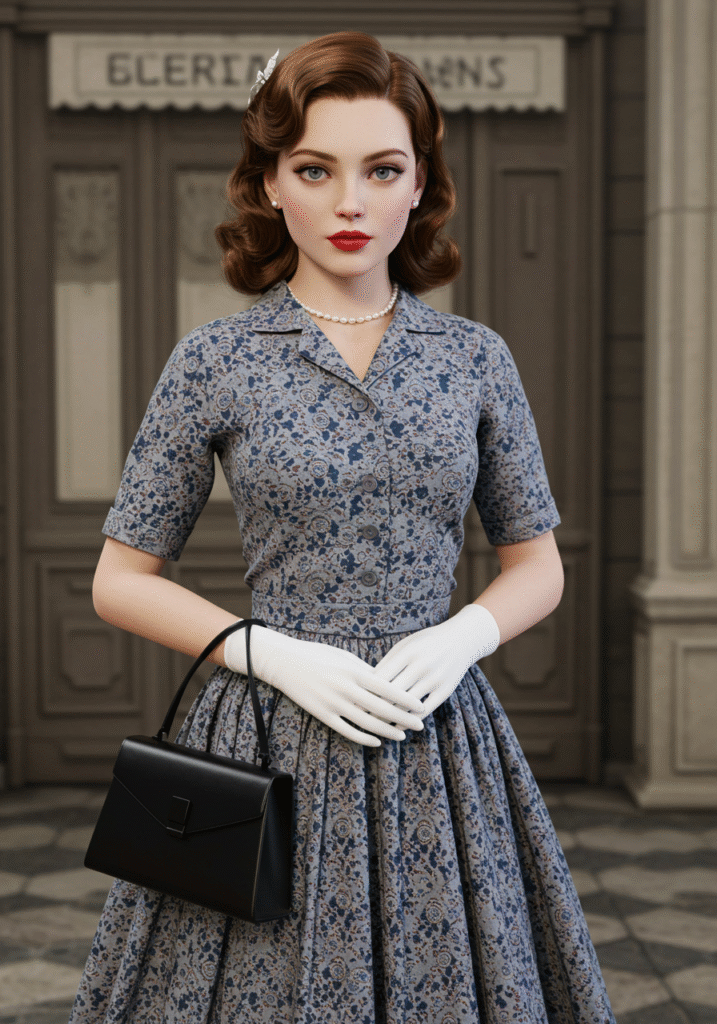
The Birth of the “New Look”
In 1947, Christian Dior unveiled what the fashion world soon celebrated as the “New Look.” By the 1950s, this revolutionary style had become the defining fashion statement of the decade. The Dior 1950 silhouette is characterized by cinched waists, full skirts, and soft shoulders, a deliberate departure from the utilitarian wartime fashion that preceded it.
This silhouette emphasized an ultra-feminine hourglass shape, celebrating curves and elegance in a way never seen before. The voluminous skirts, often made with layers of tulle and crinolines, contrasted sharply with the narrow waistlines, creating a dramatic yet graceful effect.
The “New Look” was not merely a fashion trend; it was a cultural shift. After years of fabric rationing and conservative dress codes during World War II, Dior’s designs symbolized renewal and optimism. Women embraced the luxurious fabrics, delicate details, and structured forms as an expression of newfound freedom and sophistication.
Christian Dior’s meticulous attention to detail—whether in the precise tailoring, the choice of rich materials like silk and satin, or the elegant embellishments—made the Dior 1950 line a masterpiece of craftsmanship and artistry.
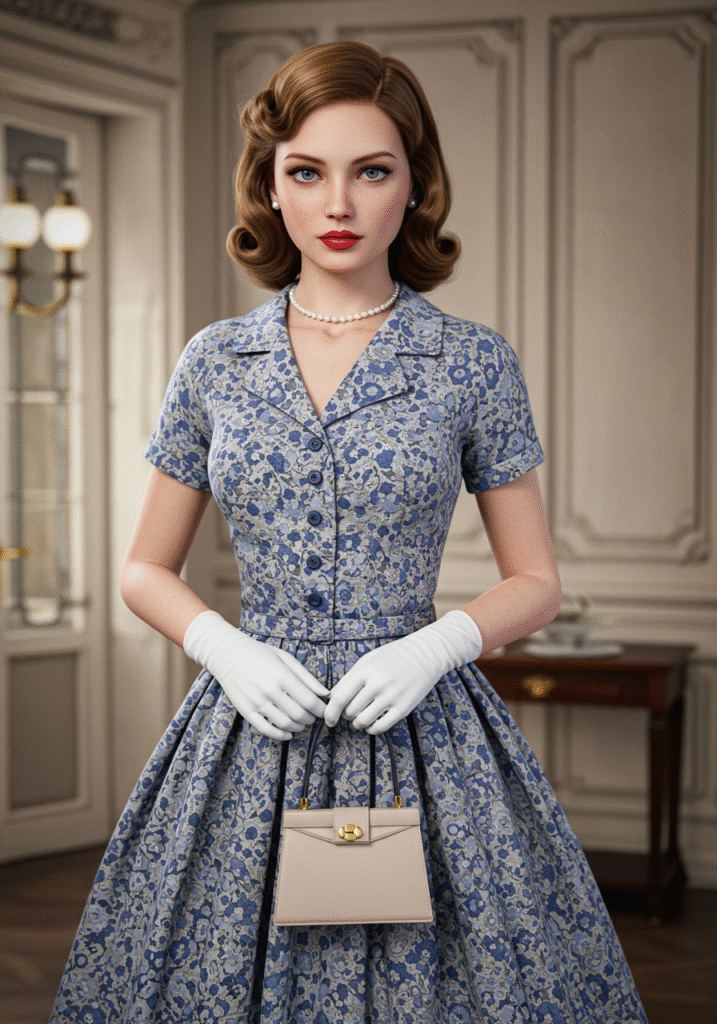
Dior 1950 and the Cultural Renaissance
The impact of Dior’s 1950s collections went far beyond the realm of high fashion. They coincided with a broader cultural rebirth, a time when the world was healing from the devastation of World War II. For many women, Dior’s lavish designs symbolized hope, confidence, and a return to beauty and personal identity. The Dior 1950 era was not simply a stylistic shift—it was an artistic and emotional reclamation.
A Symbol of Liberation and Femininity
Post-war Europe was a landscape deeply affected by austerity and utilitarianism. Fabric had been rationed for years, silhouettes were dictated by practicality, and fashion had been reduced to function. When Dior introduced his 1950 collections, he defied this norm by reintroducing luxury, femininity, and artistry into women’s clothing.
His designs featured abundant use of high-quality fabrics, full skirts that required meters of material, and carefully constructed bodices. These elements were deliberately decadent, meant to push back against the spartan looks of wartime. The public reaction was immediate and intense. Women rejoiced in clothing that celebrated their figures and allowed them to feel beautiful again. Critics called it regressive at times, but the overwhelming majority saw it as a liberation from years of fashion restrictions.
The return to elegance was not about submission—it was about empowerment through self-expression. The 1950 Dior woman was confident, bold, and no longer confined by the functionality of war-era dressing. The designs represented a psychological shift. Women were ready to be seen, admired, and respected—not just for their roles, but for their presence and power.
Global Influence
Dior’s 1950 styles quickly transcended Paris and became global phenomena. Actresses, royalty, and socialites adopted the “New Look” and wore it proudly on red carpets, in royal courts, and at society events. Icons such as Grace Kelly, Audrey Hepburn, and Marlene Dietrich were photographed in Dior gowns, further cementing the house’s reputation for sophistication and glamour.
In Hollywood, Dior’s 1950s dresses became staples in costume design, with films often featuring heroines clad in flowing skirts and fitted waists that embodied the ideal of romantic elegance. The international media celebrated Dior’s influence, and the brand became a household name.
Fashion magazines such as Vogue, Harper’s Bazaar, and Elle published spread after spread of Dior’s creations. Runway images and illustrations from the House of Dior graced covers and set new trends every season. Retailers across the U.S., U.K., and beyond scrambled to mimic the Dior silhouette, giving rise to both couture and ready-to-wear adaptations.
Redefining Haute Couture
Before Dior, the concept of a globally recognized fashion house with consistent seasonal collections and branding was still developing. Dior 1950 played a key role in formalizing this modern fashion business model. Christian Dior didn’t just design clothes—he built an empire.
The House of Dior began producing not only haute couture gowns but also accessories, perfumes, and licensed pieces that expanded the brand’s reach and profitability. The release of the iconic fragrance “Miss Dior” in the early 1950s was a part of this global branding strategy, reflecting the same grace and femininity as the clothing.
Dior also nurtured a team of artisans, tailors, and young designers who would later become legends themselves, including Yves Saint Laurent. By creating a structured yet artistic house model, Dior helped define how high fashion would function for decades to come.
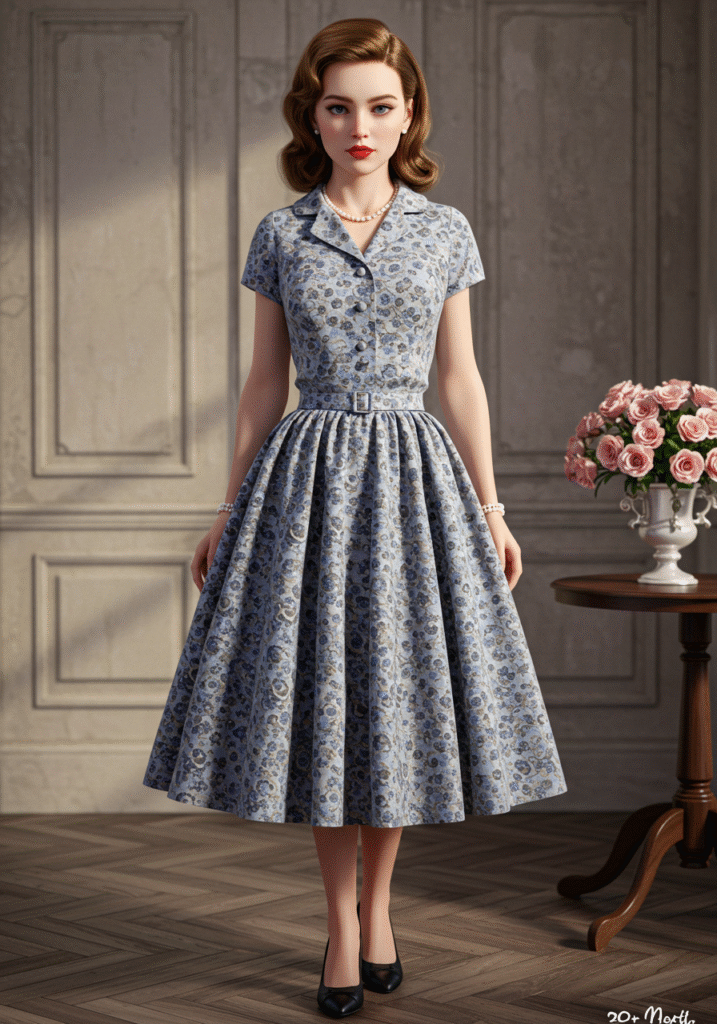
Iconic Dior 1950 Pieces
The 1950s were not just another decade in Christian Dior’s design legacy—they were a defining moment for the entire fashion industry. Dior’s creations from this era weren’t just popular; they became blueprints for elegance, setting a standard that still echoes on contemporary runways. From the ultra-feminine Bar Suit to the voluminous ball gowns, Dior’s 1950 designs redefined how women dressed, how they felt, and how they saw themselves.
In this section, we explore the most iconic Dior 1950 pieces—masterworks of design that turned garments into cultural symbols of refinement, power, and beauty.
The Bar Suit
Perhaps the most iconic piece in the Dior 1950 catalogue is the Bar Suit. First introduced in 1947 as part of Dior’s “New Look” and carried strongly into the 1950s, the Bar Suit became a visual emblem of post-war luxury and feminine empowerment.
It featured a sharply tailored ivory wool jacket with padded hips and a nipped-in waist, paired with a full, pleated black skirt. The silhouette created a strong contrast between structured top and flowing bottom, highlighting the hourglass figure in a way that felt both regal and sensual.
What made the Bar Suit revolutionary wasn’t just its aesthetic—it was the message it sent. It challenged the masculine tailoring women had adopted during wartime and brought back soft lines, curves, and grace. It celebrated the female form unapologetically. Even today, reinterpretations of the Bar Suit appear in Dior’s modern collections under Maria Grazia Chiuri, a testament to its timeless influence.
The “Zemire” Dress
Evening gowns were a cornerstone of Dior’s 1950 designs, and few were as breathtaking as the Zemire dress. Designed in 1951, this dress embodied the house’s commitment to extravagance and drama. It featured yards of luxurious silk, heavily embroidered bodices, and a train that glided like water with every step.
This gown was not for the ordinary—it was for royalty, film stars, and socialites who wanted to make a grand statement. The Zemire was couture at its most opulent, often requiring hundreds of hours of hand stitching and beading by skilled artisans in Dior’s atelier.
These types of dresses weren’t just garments; they were wearable art. Photographs from the era show women adorned in Dior evening gowns at Parisian galas, London balls, and Hollywood premieres—illuminated not just by spotlights but by the sheer genius of Dior’s design.
Day Dresses with Built-in Glamour
While Dior was known for grandeur, his 1950s daywear designs were equally impactful. Shirtwaist dresses, tea-length styles, and coat dresses—crafted with the same attention to detail as his ball gowns—allowed women to feel fashionable during even the most mundane routines.
Fabrics like cotton piqué, silk taffeta, and wool crepe were used to elevate everyday styles. The use of rich colors, florals, polka dots, and pastel palettes brought a softness that contrasted with the era’s growing industrial culture.
These dresses often featured boat necklines, three-quarter sleeves, and belts that accentuated the waist, staying true to the New Look aesthetic while adapting it for more practical use.
The “Junon” Gown
Another unforgettable piece from the Dior 1950 collection is the Junon gown, named after the Roman goddess Juno. The gown, crafted in the early ’50s, is composed of cascading petal-like overlays made of tulle and sequins, arranged to mimic the iridescence of a peacock.
It’s now housed in several museum collections and remains a powerful visual example of Christian Dior’s fascination with nature, mythology, and opulence. Junon wasn’t just a gown—it was Dior’s fantasy brought to life through fabric and light.
Accessories
The Dior 1950 ensemble was never complete without accessories—gloves, hats, pearls, and structured handbags. Dior paid immense attention to how an outfit was finished, believing accessories could elevate even the simplest silhouette.
Popular styles included:
- Waist-cinching belts that exaggerated the feminine form
- Opera gloves in satin and lace for evening occasions
- Wide-brimmed hats and pillboxes paired with veils
- Kitten heels and pointed pumps that matched handbag linings or dress details
Each piece played a role in crafting the Dior woman—a vision of timeless beauty, grace, and impeccable taste.
How to Wear Dior 1950 Fashion Today
Dior’s 1950s fashion might have originated in the golden age of couture, but its impact is anything but outdated. In fact, Dior’s ultra-feminine silhouettes, structured tailoring, and emphasis on elegance have found new life in modern wardrobes. With fashion constantly cycling through nostalgic eras, the refined aesthetic of Dior 1950 remains one of the most influential and timeless styles to embrace today.
In this section, we’ll show you exactly how to style Dior 1950 fashion in a modern, wearable, and trendy way—while still preserving its heritage appeal. Whether you’re heading to a dinner party, building a capsule wardrobe, or simply want to add a dose of old-school glamour to your everyday life, Dior’s mid-century vision offers a beautiful blueprint.
The Modern “New Look” Silhouette
The essence of Dior’s 1950s fashion was the New Look silhouette: a fitted bodice, nipped-in waist, and full skirt. Today, that look can be reimagined with modern fabrics and clean lines. Look for:
- Fit-and-flare midi dresses with modern prints or monochrome tones
- High-waisted A-line skirts paired with a tucked-in blouse or knit top
- Belted shirt dresses that mimic Dior’s structured waists
You don’t need petticoats or corsets—just good tailoring and confident styling. To bring balance, avoid over-layering and opt for sleek heels or boots rather than vintage-style platforms. It’s the silhouette, not the exact replication, that makes the outfit feel “Dior.”
Contemporary Suiting
The 1950s Bar Suit was a masterpiece of tailoring, and today’s designers have created endless reinterpretations. Women who want to channel Dior’s power and grace can opt for:
- Blazer and wide-leg pant sets in cream, black, or pastels
- Peplum jackets paired with pencil skirts or cigarette trousers
- Cinched-waist coats with structured shoulders and flared hems
These pieces maintain the essence of Dior—sharp tailoring, strong waist emphasis, and feminine detailing—while feeling entirely modern. You can even style them with sneakers or bold statement earrings for a street-style twist.
Timeless Evening Glamour
One of Dior 1950’s enduring legacies is its influence on eveningwear. The romance, drama, and intricate detailing of gowns from this era are often mirrored in today’s formal attire. Here’s how to evoke Dior’s glamour without going overboard:
- Choose tea-length dresses with lace overlays, delicate embroidery, or tulle skirts
- Look for off-the-shoulder or bateau necklines to enhance the vintage vibe
- Stick to soft, elegant hues like blush, navy, champagne, and ivory
Accessorize with modern minimalism—think a single diamond necklace or sculptural clutch—so the dress stays the focal point.
Everyday Dior-Inspired Looks
While the full Dior aesthetic might seem too formal for daily wear, there are easy ways to bring a little 1950s polish into your everyday style. Consider:
- High-waisted trousers with a tucked-in blouse and ballet flats
- Cropped cardigans over fitted camisoles, paired with swing skirts
- Trench coats with defined waists for a sleek yet classic outerwear option
Add subtle accessories like a silk scarf, cat-eye sunglasses, or pearl studs to channel vintage elegance with zero effort.
Modern Accessories
Accessories make all the difference when recreating a Dior-inspired outfit. The key is to balance vintage influence with modern wearability. Try incorporating:
- Wide belts to define the waist, even over flowy dresses or oversized blazers
- Mini structured handbags like Dior’s own Lady Dior or saddle bags
- Kitten heels or slingbacks that echo the 1950s shape but in updated materials like patent leather or mesh
- Hairpieces or headbands reminiscent of mid-century glam
And don’t forget about fragrance—Dior’s “Miss Dior” is still sold today and remains a beautiful olfactory tribute to the golden age of fashion.
Sustainable and Ethical Fashion
Embracing Dior 1950 style doesn’t mean you need to shop designer or brand new. Vintage shopping, thrifting, and reworked couture are all incredible ways to channel this era’s fashion in a sustainable way. Look for authentic 1950s garments or new pieces inspired by the silhouette, and have them tailored to fit you perfectly.
Even better, seek out brands that use ethical practices and timeless designs—those that prioritize slow fashion, craftsmanship, and beauty over trends.
Frequently Asked Questions
What is Dior 1950 known for in fashion history?
Dior 1950 is best known for popularizing the “New Look,” a revolutionary fashion silhouette that redefined post-war style. Christian Dior introduced a design featuring cinched waists, voluminous skirts, and structured tailoring—bringing femininity, elegance, and opulence back into women’s fashion after the austerity of World War II. The era marked the rise of haute couture as an art form, placing Paris back at the center of the global fashion stage.
What is the “New Look” by Dior?
The “New Look” was Dior’s iconic style launched in 1947 and perfected in the early 1950s. It featured rounded shoulders, a tightly nipped-in waist, and a full, flowing skirt that created an hourglass silhouette. It was a bold departure from the wartime styles of the 1940s, offering glamour, structure, and luxury. This design philosophy defined the fashion of the 1950s and remains one of the most influential silhouettes in history.
Why was Dior’s fashion in the 1950s so influential?
Dior’s fashion in the 1950s was influential because it symbolized renewal, elegance, and optimism. After the hardships of the war, his luxurious designs brought beauty and hope back into everyday life. Celebrities, royalty, and high society embraced his looks, setting trends across the globe. The house of Dior established a new gold standard for couture, craftsmanship, and feminine style—principles that are still respected and referenced today.
How did Christian Dior impact women’s fashion in the 1950s?
Christian Dior revolutionized women’s fashion by emphasizing femininity, sophistication, and elegance. His designs gave women a new silhouette that celebrated curves and grace, moving away from boxy and utilitarian wartime clothing. He also brought back detailed tailoring, luxurious fabrics, and artistic flair, making fashion feel aspirational yet personal.
What pieces defined Dior’s 1950 collections?
The most defining pieces of Dior’s 1950 collections include:
The Bar Jacket: A structured, cinched-waist blazer that embodied the New Look.
Full A-line Skirts: Often made with layers of fabric, these skirts were paired with tiny waists.
Peplum Dresses: Dresses with flared, gathered fabric at the waist to emphasize the hourglass figure.
Evening Gowns: Lavish and romantic, crafted with tulle, satin, or silk.
These pieces were not just stylish—they were sculptural, reflecting Dior’s belief that fashion was a form of architecture.
Can you still wear Dior 1950-inspired fashion today?
Absolutely. Dior 1950-inspired fashion is timeless and versatile. Modern designers and fashion lovers continue to reinterpret the silhouette with contemporary twists. Think peplum tops, midi skirts, tailored jackets, and dresses with defined waistlines. Whether you’re dressing for a formal event or simply embracing vintage chic in everyday wear, the elegance of Dior’s 1950s design language still resonates powerfully in today’s style landscape.
Is the Dior brand still influenced by its 1950s roots?
Yes, the Dior brand remains deeply rooted in its 1950s heritage. Current creative directors often pay homage to Christian Dior’s original vision by reimagining the New Look for modern audiences. Collections frequently include updated versions of the Bar Jacket, sculpted skirts, and archival patterns. The label continues to celebrate craftsmanship, femininity, and timeless elegance—just as Dior did in the golden age of the 1950s.
Where can I buy Dior 1950-style clothing today?
You can explore Dior 1950-style clothing through:
Dior boutiques or official website (for modern takes on archival looks)
Luxury vintage retailers like 1stdibs or The RealReal
Contemporary brands inspired by 1950s fashion, including Carolina Herrera, Oscar de la Renta, and even Zara’s premium lines
Tailor-made or custom fashion houses for those seeking bespoke vintage recreations
Always check for authenticity if you’re investing in true vintage Dior pieces.
What made Christian Dior different from other designers of his time?
Christian Dior stood out for his dramatic return to romanticism and extravagance. While other designers focused on functionality and minimalism post-war, Dior embraced femininity and grandeur. He prioritized construction, silhouette, and fabric richness—treating garments as works of art. His success also laid the foundation for fashion as a powerful cultural and commercial force in the 20th century.
Why is Dior 1950 still important in 21st-century fashion?
Dior 1950 continues to influence today’s fashion because it represents the perfect blend of tradition and innovation. The decade solidified core principles that designers still value: structure, proportion, elegance, and emotional storytelling through clothing. In an age of fast fashion and fleeting trends, the craftsmanship and intention behind Dior’s mid-century designs feel refreshing—and increasingly relevant.
Conclusion
The story of Dior 1950 is not just about fashion—it is about a cultural renaissance, a design philosophy that transformed the role of femininity in couture, and a standard of elegance that still echoes through the industry today. When Christian Dior introduced his vision in the aftermath of World War II, he wasn’t just dressing women—he was redefining what it meant to be a woman in a new, hopeful era.
The “New Look”, introduced in 1947 but perfected throughout the 1950s, became the cornerstone of this transformation. With its cinched waist, full skirts, rounded shoulders, and lush fabrics, it departed radically from the utilitarian silhouettes of the 1940s. Dior gave women permission to be glamorous again. He brought back an era of opulence, grace, and romance in a time that desperately craved beauty. This shift was not just sartorial—it was symbolic. It suggested that fashion could uplift, empower, and inspire.
Today, more than 70 years later, the style legacy of Dior 1950 is alive and thriving in both high fashion and everyday wardrobes. Modern designers—from Maria Grazia Chiuri (Dior’s current creative director) to independent labels worldwide—continue to reinterpret Dior’s original vision. Whether it’s a high-end peplum blazer, a voluminous midi skirt, or a sharply tailored Bar jacket, the architectural elegance of 1950s Dior remains an eternal blueprint.
What’s even more fascinating is how Dior’s mid-century glamour has evolved to suit today’s values. Back then, fashion was about fantasy and aspiration—today, it’s equally about functionality, inclusivity, and sustainability. Yet Dior’s core principles—beauty, craftsmanship, and form—remain as relevant as ever. You can wear a Dior-inspired look without the corsetry, without the societal expectations, and without compromising modern comfort. In fact, today’s Dior woman reclaims the silhouette on her own terms—mixing vintage with streetwear, tailoring with transparency, and elegance with empowerment.
And while the fashion house of Dior has expanded far beyond the atelier—into makeup, fragrance, accessories, and lifestyle—it still pays homage to its roots. The scent of Miss Dior, originally launched in 1947, continues to be reimagined for new generations. Campaigns today often reference archival images, from full skirts floating on staircases to hourglass suits posed in Parisian salons. The brand knows that its greatest strength is its ability to evolve while respecting the past.
For fashion lovers, wearing a Dior 1950-inspired piece isn’t about nostalgia—it’s about channeling an energy. It’s a way to connect to a moment in history when creativity was pure, silhouettes were crafted with intention, and every garment told a story. Whether you choose to embrace it in a modern context—through structured coats, dramatic skirts, or minimalist suiting—or in literal vintage finds, you are stepping into a legacy of sophistication and self-expression.
Importantly, this aesthetic is also inclusive of many personal styles. You don’t have to embody old-Hollywood glamour to appreciate the tailoring. You might be a streetwear enthusiast pairing a Dior-esque peplum jacket with distressed jeans, or a minimalist who finds beauty in the sharp lines of a 1950s-inspired coat. There is room for interpretation, innovation, and individual identity.
From a cultural standpoint, the rise of Dior in the 1950s was a global phenomenon. Paris regained its title as the fashion capital of the world, and women everywhere—from Hollywood icons like Grace Kelly to everyday dressmakers—began to embrace the house’s aesthetic. Today, that same global reach exists thanks to the internet, fashion influencers, and archives that allow anyone, anywhere, to draw inspiration from Dior’s timeless creations.
As we look toward the future of fashion—one increasingly influenced by AI, digital runways, and fast-changing trends—the quiet strength of Dior 1950 reminds us of something more lasting. That beauty doesn’t have to shout. That elegance is eternal. And that the best fashion always tells a story rooted in history but worn for the now.
So, whether you’re curating your wardrobe or simply seeking inspiration, Dior 1950 offers a masterclass in timeless style. It celebrates femininity, structure, and confidence—without needing to compete with trends. In the end, Dior’s legacy isn’t just sewn into the seams of couture garments; it lives in every woman who chooses to wear her elegance like armor.
In a world that constantly reinvents style, Dior 1950 is the rare chapter we keep rereading—and with good reason. It’s not just fashion. It’s a legacy.

